Welcome back, in the last article “The Idea Behind Dahlander Motors” we were curious about the need for Dahlander motors and we learned the main idea beyond these motors also when and how to use these types of induction motors.
Today we are going more practically by discussing the dahlander motor control circuit and How it could be performed using the “classic control circuit design”.
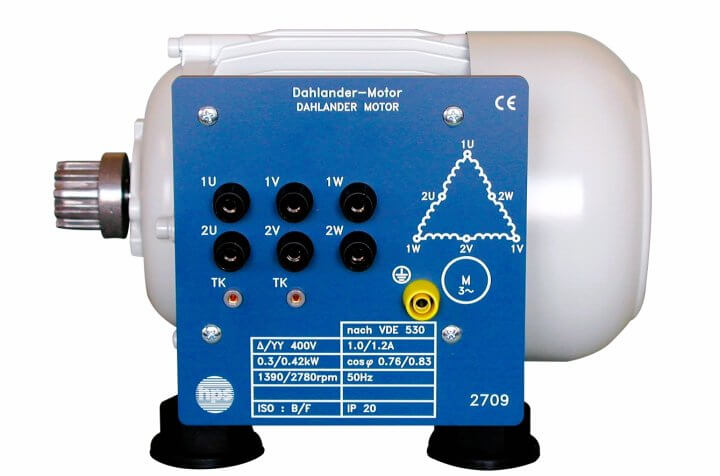
Power Circuit of a Dahlander Motor
As we discussed before, the speed control of the normal Induction motors is not simple and can be made by adjusting two different factors (Frequency of the power source, Number of poles in the motor winding).
Dahlander motor is nothing more than a two-speed induction motor and we can handle these two speeds by switching the configuration of the electrical windings, indirectly adding or removing poles, and thus varying the rotor speed.
For further explanation please find the previous post (“Dahlander Motors”)
Here in below figure we can see the power circuit diagram for a Dahlander motor, the circuit consists of:
Protection Element: we can see (F1) that represents the protection fuse for the power circuit this element could be replaced by a suitable circuit breaker or motor overload, it depends on your application and the desired response of your protection element.

Delta connection contactor (K1):
This contactor is responsible for connecting the internal coils of the dahlander motor as a delta connection to set the lower speed. The respective image is shown on the left side of the below image.
The power supply phases should be connected at [U1, W1, V1] using K1 contactor.
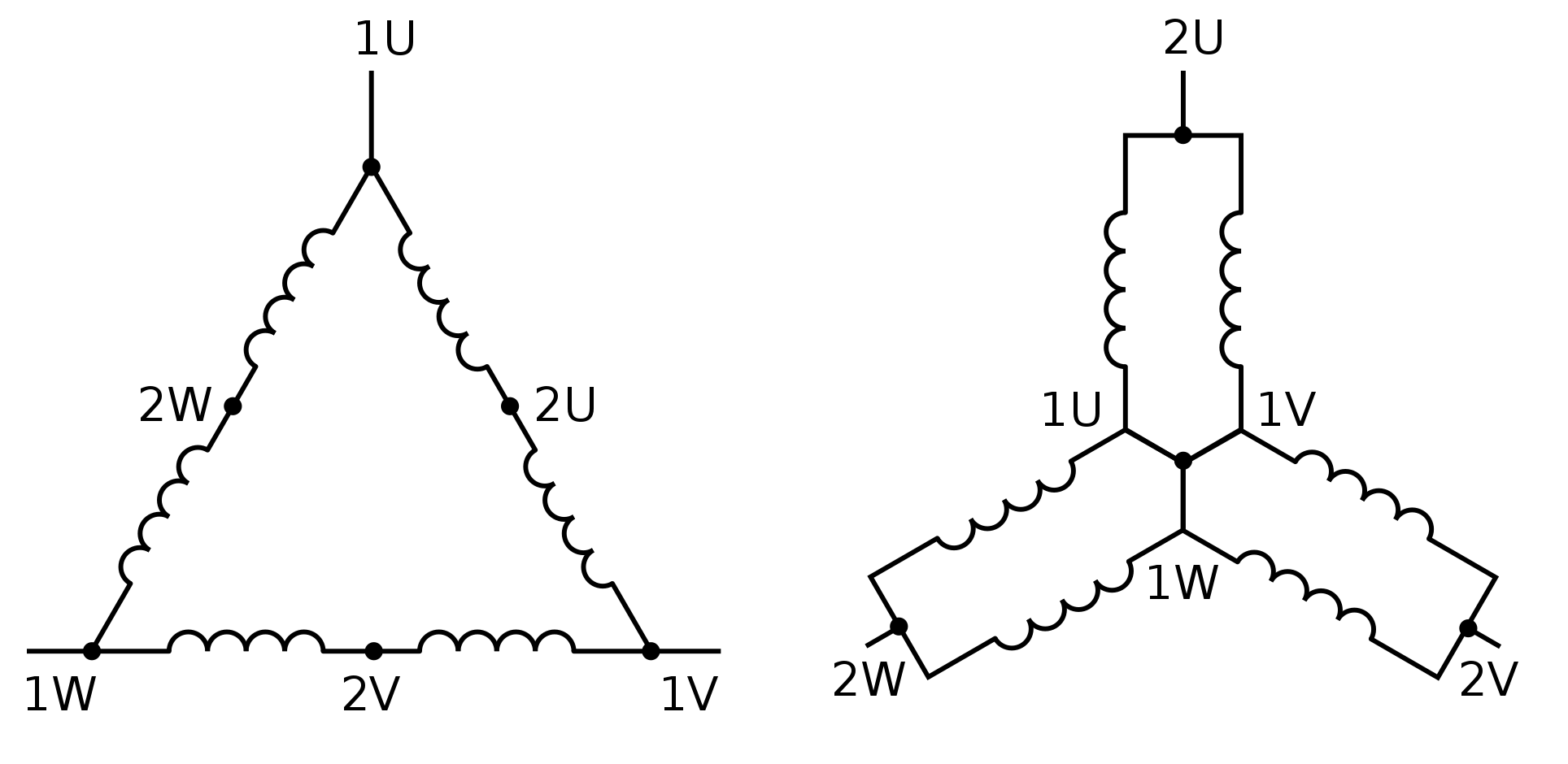
Double star contactors (K2 – K3):
These two contactors are responsible for connecting the internal coils of the dahlander motor as a double star connection to set the highest speed. The respective image is shown on the right side of the above image.
The power supply phases should be connected at [U2, W2, V2] using K3 contactor, and [U1, W1, V1] should be shorted using K2 contactor.
Control Circuit of the Dahlander Motor
Here we can see the below Figure the control circuit of a Dahlander Motor.
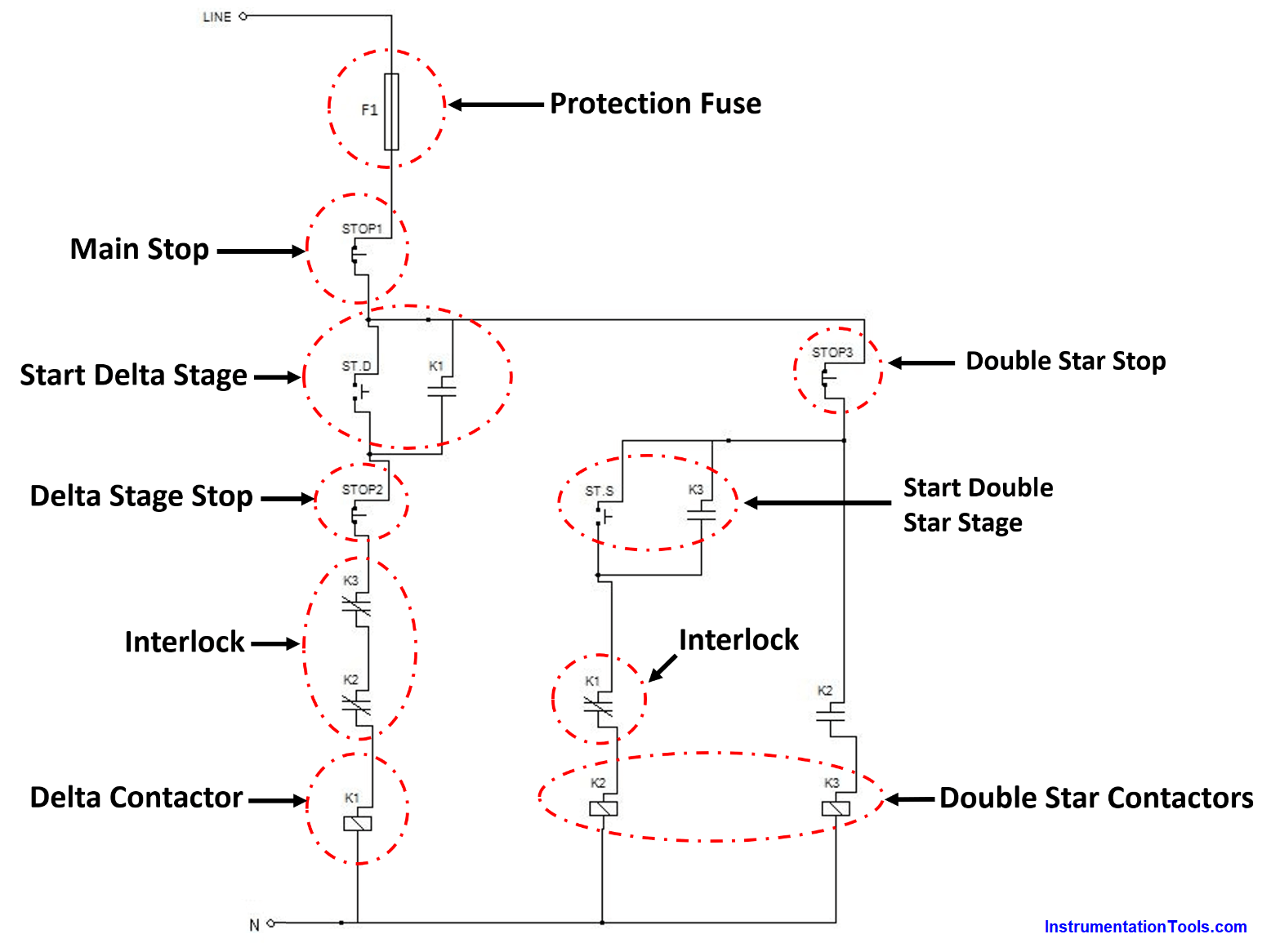
This motor is controlled by three stop (NC) push buttons, (STOP1) to stop the two stages of the motor, (STOP2) to stop the delta stage, and (STOP3) to stop the double star stage.
Also, there are two start (NO) push button, one for the delta stage and the other for the Double star stage.
There must be an electrical interlock between the two stages to prevent any hazards (like phases shortage) when you are switching between the two stages.
If you liked this article, then please subscribe to our YouTube Channel for Instrumentation, Electrical, PLC, and SCADA video tutorials.
You can also follow us on Facebook and Twitter to receive daily updates.
Read Next:
DOL Starter Circuit Diagrams
Earth Leakage Circuit Breaker
Star Delta Starter Circuit Diagrams
Control Two Motors after Time Delay
Thermal Protection Relay for Motors
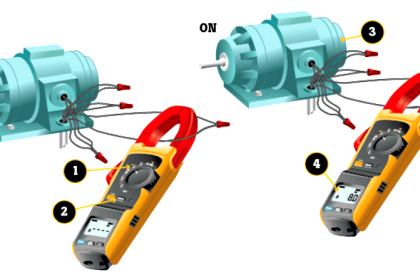
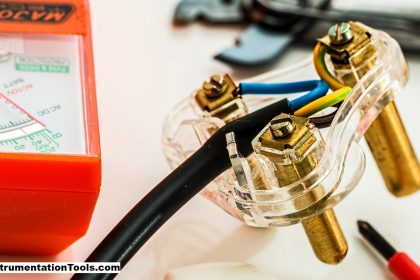
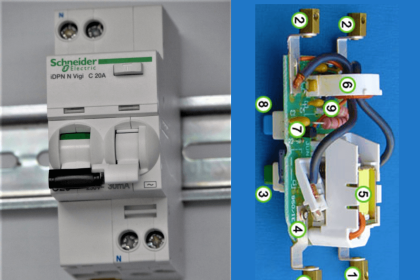



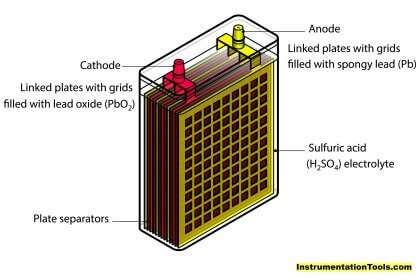
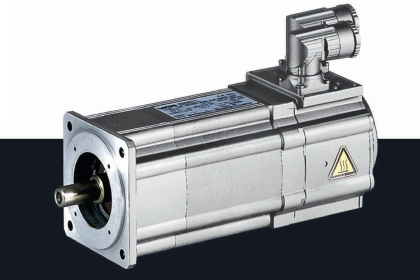
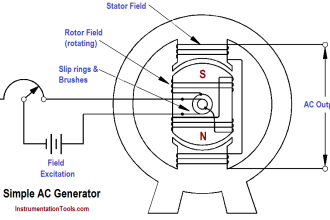
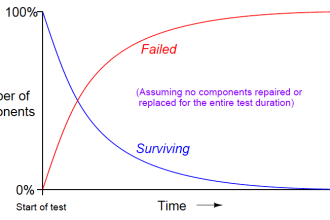
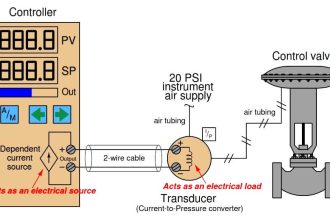
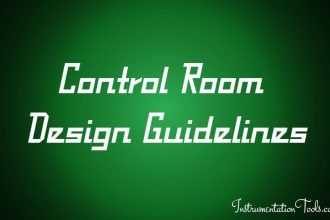

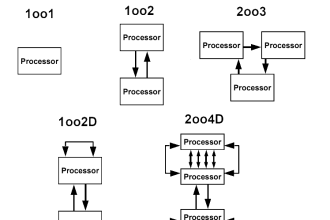


my name is Uwiragiye From Rwanda how can i get a dahlander motor